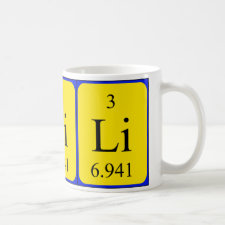
Custom Search
Authors: Ventura, S, Bhamidi, S, Hornbostel, M, Anoop, N, Perea, E
Article title: Selective Recovery of Metals from Geothermal Brines
DOI: 10.2172/1336270 URL: https://www.osti.gov/scitech/biblio/1336270 Abstract: The objective of this project was to determine the feasibility of developing a new generation of highly selective low-cost ion-exchange resins based on metal-ion imprinted polymers for the separation of metals from geothermal fluids. Expansion of geothermal energy production over the entire U.S. will involve exploitation of low-to-medium temperature thermal waters. Creating value streams from the recovery of critical and near-critical metals from these thermal waters will encourage geothermal expansion. Selective extraction of metals from geothermal fluids is needed to design a cost-effective process for the recovery of lithium and manganese-two near-critical metals with well-known application in the growing lithium battery industry. We have prepared new lithium- and manganese-imprinted polymers in the form of beads by crosslinking polymerization of a metal polymerizable chelate, where the metal acts as a template. Upon leaching out the metal template, the crosslinked polymer is expected to leave cavities defined by the ligand functional group with enhanced selectivity for binding the template metal. We have demonstrated that lithium- and manganese-imprinted polymer beads can be used as selective solid sorbents for the extraction of lithium and manganese from brines. The polymers were tested both in batch extractions and packed bed lab-scale columns at temperatures of 45-100°C. Lithium-imprinted polymers were found to have Li+ adsorption capacity as high as 2.8 mg Li+/g polymer at 45°C. Manganese-imprinted polymers were found to have a Mn2+ adsorption capacity of more than 23 mg Mn2+/g polymer at 75°C. The Li+ extraction efficiency of the Li-imprinted polymer was found to be more that 95% when a brine containing 390 ppm Li+, 410 ppm Na+, and 390 ppm K+ was passed through a packed bed of the polymer in a lab-scale column at 45°C. In brines containing 360 ppm Li+, 10,000 ppm Na+, and 3,000 ppm K+, the Li separation efficiency of the imprinted sorbent was found to be about 30% at 45°C. The Mn extraction efficiency of the Mn-imprinted polymer from a synthetic brine containing competing cations such as Li+, Na+, K+, Ca2+, Mg2+, and Ba2+ was found to be 72% at 75°C in a lab-scale column. A preliminary process cost assessment for the recovery of lithium and production of lithium carbonate from geothermal brines was performed. We concluded that the total cost of a plant designed to process 6000 gal of brine/min is 20,456,265 with a total annual operating costs of $11,057,048 based on 300 days/year uptime. Assuming a conservative sale price of 2000/ton for Li2CO3, the annual revenue from the sale of Li2CO3 produced by this plant would exceed $40,000,000 at a production rate of 49Kg/min for geothermal fluids containing 400 ppm Li+.
Template and target information: lithium ion, Li(I), Manganese ion, Mn(II)
Author keywords:



Tweet
Join the Society for Molecular Imprinting

New items RSS feed
 View latest updates
View latest updates
Sign-up for e-mail updates:
Choose between receiving an occasional newsletter or more frequent e-mail alerts.
Click here to go to the sign-up page.
Is your name elemental or peptidic? Enter your name and find out by clicking either of the buttons below!
Other products you may like:
Join the Society for Molecular Imprinting

New items RSS feed
Sign-up for e-mail updates:
Choose between receiving an occasional newsletter or more frequent e-mail alerts.
Click here to go to the sign-up page.
Is your name elemental or peptidic? Enter your name and find out by clicking either of the buttons below!
Other products you may like:
 MIPdatabase
MIPdatabase









